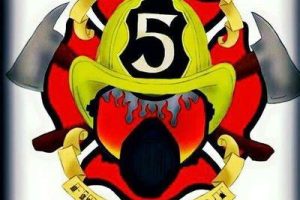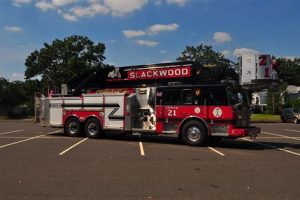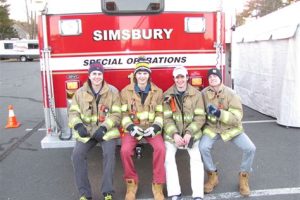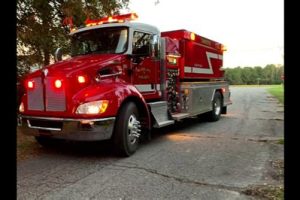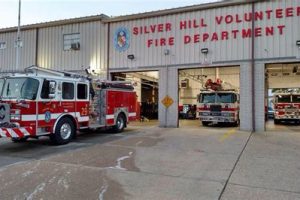Table of Contents
Looking for innovative and effective training ideas for your volunteer fire department? Discover a range of practical and engaging methods to enhance skills, improve teamwork, and ensure the safety of your community. From hands-on simulations to virtual reality exercises, explore new approaches to training that will empower your volunteers and prepare them for any emergency situation.
The world of firefighting is one that demands courage, dedication, and an unwavering commitment to serving the community. Behind the scenes of these heroic acts are the men and women who make up volunteer fire departments, selflessly sacrificing their time and energy to keep us safe. However, in order to effectively respond to emergencies, these everyday heroes must undergo rigorous training that prepares them for any situation that may arise. In this article, we will explore some innovative ideas for volunteer fire department training, ensuring that these brave individuals are equipped with the skills and knowledge needed to tackle the toughest of challenges.
Introduction: The Importance of Volunteer Fire Department Training
Volunteer fire departments play a crucial role in ensuring the safety and well-being of communities. These dedicated individuals sacrifice their time and energy to protect lives and property in times of emergencies. However, with limited resources and manpower, it is essential for volunteer firefighters to receive regular training to enhance their skills and knowledge. In this article, we will explore some innovative training ideas that can help volunteer fire departments improve their effectiveness and efficiency in emergency situations.
1. Hands-on Equipment Training
One of the most effective ways to train volunteer firefighters is through hands-on equipment training. This involves familiarizing volunteers with various firefighting tools, such as hoses, ladders, breathing apparatus, and fire extinguishers. By allowing volunteers to practice using these tools in a controlled environment, they can develop the necessary skills and confidence to handle real-life emergencies.
2. Live Fire Drills
Live fire drills are an essential part of firefighter training. These drills simulate real-life scenarios and expose volunteers to the heat, smoke, and stress they may encounter during actual fires. By practicing techniques such as search and rescue, ventilation, and fire suppression in a controlled burn environment, volunteer firefighters can improve their decision-making abilities and teamwork skills.
3. Emergency Medical Services (EMS) Training
A significant portion of a firefighter’s role involves providing emergency medical services. Therefore, it is crucial for volunteer fire departments to provide comprehensive EMS training. This may include CPR certification, first aid training, and basic life support techniques. By equipping volunteers with these skills, they can effectively respond to medical emergencies alongside firefighting duties.
4. Vehicle Extrication Training
In many emergency situations, volunteer firefighters are called upon to perform vehicle extrications. These incidents require specialized training to safely and efficiently remove individuals trapped in wrecked vehicles. Training exercises involving simulated car accidents can help volunteers develop the necessary skills to handle complex extrication scenarios.
5. Hazardous Materials (HazMat) Training
Volunteer firefighters must be prepared to handle hazardous materials incidents, such as chemical spills or leaks. HazMat training provides volunteers with the knowledge and skills to assess, contain, and mitigate these situations safely. This training should cover topics such as identifying hazardous materials, using protective equipment, and implementing decontamination procedures.
6. Incident Command System (ICS) Training
The Incident Command System (ICS) is essential for effective coordination and communication during emergency operations. Volunteer fire departments should provide ICS training to ensure all members understand their roles and responsibilities within the command structure. This training should cover incident management, resource allocation, and coordination with other agencies.
7. Physical Fitness and Wellness Programs
Firefighting is a physically demanding profession, requiring strength, agility, and endurance. Volunteer fire departments should prioritize physical fitness and wellness programs to ensure their members are in optimal condition. Regular workouts, nutrition education, and mental health support can contribute to reducing injuries, improving performance, and enhancing overall well-being.
8. Cross-Training Opportunities
Encouraging cross-training among volunteer firefighters can broaden their skill sets and increase operational flexibility. By allowing members to train in different areas, such as firefighting, EMS, or HazMat, departments can create a more versatile and adaptable workforce. Cross-training also promotes teamwork and fosters a better understanding of each other’s roles.
9. Scenario-Based Training Exercises
Scenario-based training exercises provide volunteers with realistic simulations of emergency situations they may encounter. These exercises can be designed to test their decision-making abilities, problem-solving skills, and ability to work under pressure. By replicating real-life scenarios, volunteers can learn to adapt and respond effectively in critical situations.
10. Continuing Education and Professional Development
Volunteer fire departments should encourage their members to pursue continuing education and professional development opportunities. This can include attending conferences, seminars, and workshops related to firefighting and emergency services. By staying up-to-date with the latest techniques, technologies, and best practices, volunteers can enhance their knowledge and skills, ultimately benefiting their communities.
Conclusion: Investing in Volunteer Firefighter Training
Investing in training programs for volunteer firefighters is crucial for maintaining a high level of safety and professionalism within communities. By providing hands-on equipment training, live fire drills, EMS training, and other innovative approaches, volunteer fire departments can ensure their members are prepared to handle a wide range of emergencies. Regular training not only enhances individual skills but also promotes teamwork, coordination, and effective communication among volunteer firefighters. By continuously improving their capabilities, these selfless individuals can continue to serve and protect their communities with utmost dedication and effectiveness.
Enhancing Volunteer Fire Department Training with Realistic Fire-Ground Operations
In order to ensure that volunteer firefighters are well-prepared for any emergency, regular training in conducting fire-ground operations is essential. These training sessions should involve simulating various scenarios, such as controlled burns, search and rescue simulations, and live-fire training exercises. By providing volunteers with realistic experiences, they can develop the necessary skills and knowledge to effectively handle different situations they may encounter on the fire ground.
Equipping Volunteer Firefighters with Essential Vehicle Extrication Techniques
One crucial aspect of volunteer fire department training is equipping firefighters with essential vehicle extrication techniques. These exercises should include practicing the use of hydraulic tools, harnessing proper safety techniques, and understanding the recovery and stabilization of vehicles involved in accidents. By focusing on this area of training, volunteers will be better prepared to handle car accidents and other incidents involving trapped individuals, ensuring a swift and efficient response to save lives.
Preparing Volunteer Firefighters for Hazardous Materials Response
Given the inherent dangers associated with hazardous materials incidents, it is vital for volunteer fire departments to conduct rigorous training sessions to educate their members on effectively responding to such situations. This training should include recognizing hazardous materials, implementing safety protocols, and using personal protective equipment to mitigate risks. By providing comprehensive training in hazardous materials response, volunteer firefighters can handle these challenging incidents with confidence and expertise.
Enhancing Volunteer Firefighters’ Knowledge of Wildland Firefighting Techniques
As wildfires continue to pose significant threats, it is crucial for volunteer fire departments to invest in training programs that focus on wildland firefighting. These sessions should educate volunteers on fire behavior, strategic control measures, and specialized equipment usage to effectively combat these complex and dynamic fires. By enhancing their knowledge of wildland firefighting techniques, volunteer firefighters can play a crucial role in protecting communities and minimizing damage caused by wildfires.
Equipping Volunteer Firefighters with Basic Emergency Medical Services Skills
Volunteer firefighters often play a crucial role in providing initial medical assistance during emergencies. Hence, implementing training programs that cover basic emergency medical services is crucial. Volunteers should be trained in basic life support techniques, first aid application, and knowledge of common medical emergencies. By equipping them with these essential skills, volunteer firefighters can provide immediate and potentially life-saving care to individuals in need.
Nurturing Leadership Skills and Incident Command Abilities
Volunteer fire department training should aim to develop leadership skills among volunteers to ensure efficient incident command during emergency situations. These training sessions should cover decision-making, effective communication, and resource management, preparing volunteers to assume leadership roles when needed. By nurturing leadership skills, volunteer firefighters will be better equipped to make critical decisions and effectively coordinate the efforts of their team in high-pressure situations.
Improving Volunteer Firefighters’ Technical Rescue Capabilities
Volunteer fire departments must conduct regular training exercises that enhance the technical rescue skills of their members. This should include training in swiftwater rescue, rope rescue, confined space rescue, and trench rescue, enabling volunteers to handle complex rescue operations safely. By continuously improving their technical rescue capabilities, volunteer firefighters can confidently respond to a wide range of emergency scenarios, ensuring the safety and well-being of those in need.
Fostering Effective Communication and Radio Procedures
Volunteer fire departments should prioritize training in communication and radio procedures to ensure seamless coordination during emergency responses. Volunteers should be trained in using various radio devices, proper call sign usage, and clear and concise communication techniques to establish effective communication networks amidst chaotic situations. By fostering effective communication, volunteer firefighters can enhance their ability to work cohesively as a team and efficiently respond to emergencies.
As a journalist, it is fascinating to explore the various training ideas implemented by volunteer fire departments. These organizations play a crucial role in ensuring the safety and well-being of their communities, often operating on limited resources and manpower. Consequently, innovative training methods become essential to equip volunteers with the necessary skills and knowledge to respond effectively to emergencies. Below are some noteworthy training ideas that have caught my attention:
1. Simulation-based training: Volunteer fire departments have started incorporating simulation-based training to provide a realistic environment for volunteers to practice their skills. This approach allows them to simulate various emergency scenarios, such as house fires or car accidents, in a controlled setting. By engaging in hands-on exercises, volunteers can enhance their decision-making abilities and learn how to work together seamlessly as a team.
2. Cross-training opportunities: To further expand their skill sets, volunteer fire departments encourage cross-training among their members. This involves providing opportunities for volunteers to learn different roles and responsibilities within the department. For instance, firefighters may have the chance to train as emergency medical technicians (EMTs) or hazardous materials responders. Such cross-training not only enhances their individual capabilities but also improves overall department efficiency.
3. Collaborative drills with neighboring departments: Recognizing the importance of collaboration during emergencies, volunteer fire departments often organize joint training exercises with neighboring departments. These drills allow volunteers from different departments to work together, fostering teamwork and coordination among personnel from diverse backgrounds. Additionally, these collaborative efforts help establish effective communication protocols and build relationships that can be vital during large-scale emergencies.
4. Technology integration: Volunteer fire departments are increasingly embracing technological advancements to enhance their training programs. From utilizing virtual reality simulations to incorporating online learning modules, technology offers a range of innovative possibilities. Online platforms can provide volunteers with access to training materials and resources that can be accessed at their convenience, allowing for continuous learning and skill development.
5. Community involvement: Volunteer fire departments understand the importance of engaging with the community they serve. Some departments have started organizing community-wide emergency preparedness events or open houses. These events not only educate the public about fire safety but also offer an opportunity for volunteers to showcase their skills and interact with community members. This involvement helps build trust and support between the department and the community, fostering a collaborative approach towards emergency response.
In conclusion, volunteer fire departments are continually exploring innovative training ideas to equip their volunteers with the necessary skills and knowledge. Through simulation-based training, cross-training opportunities, collaborative drills, technology integration, and community involvement, these departments strive to enhance their capabilities and ensure the safety of their communities.
Thank you for visiting our blog today to learn more about volunteer fire department training ideas. We hope that you have found this article informative and valuable in understanding the various ways in which volunteer firefighters can enhance their skills and knowledge. As a volunteer firefighter, it is crucial to stay up-to-date with the latest training techniques and strategies to ensure the safety of both yourself and the community you serve.
First and foremost, it is important to emphasize the significance of regular physical fitness training for volunteer firefighters. Maintaining a good level of physical fitness is essential in emergency situations where agility, strength, and endurance are required. Incorporating exercises such as running, weightlifting, and circuit training into your routine can significantly improve your overall fitness levels. Additionally, participating in team sports or group activities can enhance coordination and foster a sense of camaraderie among fellow firefighters.
Another vital aspect of volunteer fire department training is ongoing education and skill development. Firefighting techniques and equipment are constantly evolving, and it is crucial for volunteer firefighters to stay updated with the latest advancements in the field. Attending seminars, workshops, and conferences related to firefighting can provide valuable insights and networking opportunities. Moreover, seeking certifications in specialized areas such as hazardous materials handling or technical rescue can greatly enhance your effectiveness as a firefighter.
In addition to physical fitness and ongoing education, regular drills and simulations are essential for volunteer firefighters to sharpen their response skills. Conducting realistic scenarios that mimic real-life emergencies can help firefighters develop quick decision-making abilities and improve their communication and teamwork skills. These drills should cover a wide range of scenarios, including structural fires, vehicle accidents, and medical emergencies. Regularly practicing these drills not only strengthens individual skills but also fosters effective coordination and collaboration among team members.
In conclusion, volunteer firefighters play a vital role in ensuring the safety and well-being of their communities. By prioritizing physical fitness training, ongoing education, and regular drills, volunteer firefighters can continuously improve their skills and stay prepared for any emergency situation. We hope that the ideas presented in this article have inspired you to further enhance your training efforts and make a positive impact as a volunteer firefighter.
Thank you once again for visiting our blog, and we encourage you to explore our other articles for more valuable insights on firefighting and emergency response.
.
People also ask about Volunteer Fire Department Training Ideas:
What are some training ideas for volunteer fire departments?
How can volunteer firefighters improve their skills?
Are there any specialized training programs for volunteer firefighters?
What are the essential training topics for volunteer fire department members?
Where can volunteer firefighters find training resources?
1. What are some training ideas for volunteer fire departments?
Volunteer fire departments can implement various training ideas to enhance their members’ skills and preparedness. Here are a few suggestions:
- Live fire drills: Simulating real-life scenarios helps firefighters practice their techniques, improve situational awareness, and familiarize themselves with equipment.
- Search and rescue exercises: These drills focus on honing search and rescue skills in different environments, such as buildings or wilderness areas.
- Hazardous materials training: Providing education on handling hazardous substances equips firefighters to respond safely to incidents involving chemicals or other dangerous materials.
- Emergency medical services (EMS) training: Offering basic first aid, CPR, and other medical training ensures firefighters can provide immediate assistance until professional medical help arrives.
2. How can volunteer firefighters improve their skills?
Volunteer firefighters can continuously enhance their skills by:
- Attending regular training sessions: Participating in ongoing training programs keeps firefighters up-to-date with the latest techniques, equipment, and safety protocols.
- Seeking specialized certifications: Obtaining certifications in areas such as vehicle extrication, rope rescue, or wildland firefighting expands individual skill sets and benefits the whole department.
- Participating in joint training exercises: Collaborating with neighboring fire departments or emergency response agencies allows firefighters to learn from one another, share best practices, and improve coordination during mutual aid situations.
- Engaging in professional development opportunities: Attending conferences, workshops, and seminars related to firefighting keeps volunteers informed about industry advancements and fosters networking with experts.
3. Are there any specialized training programs for volunteer firefighters?
Yes, several organizations offer specialized training programs tailored to the needs of volunteer firefighters. These programs often cover topics such as:
- Wildland firefighting: Training in combating wildfires, including fire behavior, suppression techniques, and safety measures specific to forested areas.
- Technical rescue: Providing skills in handling challenging rescues like confined space incidents, high-angle rope rescues, and swiftwater rescues.
- Fire officer development: Offering leadership and management training for those aspiring to or already serving in officer positions within volunteer fire departments.
- Fire investigation: Educating firefighters on fire cause determination, evidence preservation, and proper reporting techniques to assist in fire investigations.
4. What are the essential training topics for volunteer fire department members?
Volunteer fire department members should receive training on various essential topics, including:
- Firefighting tactics and strategies: Covering basic firefighting skills, incident command systems, fire behavior, and how to effectively extinguish fires.
- Emergency vehicle operations: Teaching safe driving techniques and protocols when responding to emergencies, ensuring the well-being of both firefighters and the public.
- Building construction and fire dynamics: Providing knowledge about different building types, their structural characteristics, and how fires behave within them.
- Personal protective equipment (PPE) usage: Instructing firefighters on proper PPE selection, maintenance, and usage to ensure their safety during operations.
5. Where can volunteer firefighters find training resources?
A variety of resources are available for volunteer firefighters to access valuable training materials:
- Online platforms: Numerous websites offer free or paid training courses, webinars, videos, and downloadable resources related to firefighting and emergency response.
- Local fire academies: Many areas have regional fire academies or training centers that provide comprehensive training programs for both career and volunteer firefighters.
- Fire service associations: National and local fire service organizations often offer training opportunities, conferences, and access to industry publications.
- Mentorship programs: Establishing mentorship programs within volunteer fire departments allows experienced firefighters to pass on their knowledge and provide hands-on training to newer members.
Remember to consult your department’s training officer or chief for guidance on specific training needs and requirements.


